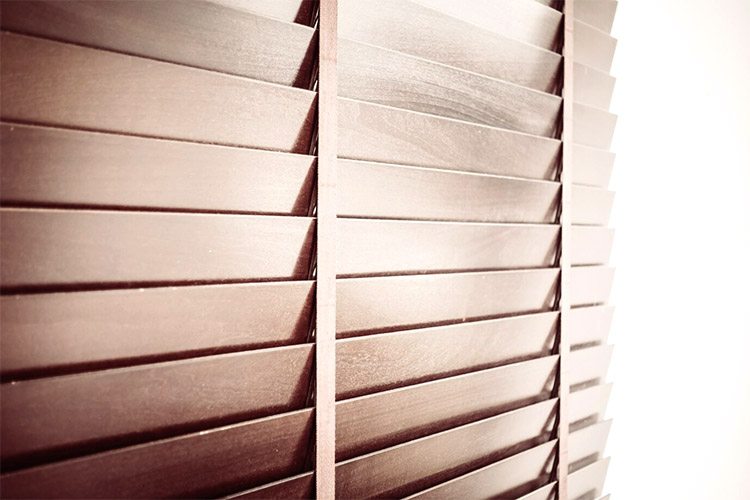Contents
Whether one chooses inside or outside mount blinds, obtaining precise measurements is critical to ensure that the window treatments not only look polished but also function effectively.
This guide will outline the necessary tools, provide step-by-step measuring techniques, and highlight common pitfalls to avoid.
Are you prepared to enhance the appearance of your windows? Let us begin.
Why is Measuring for Window Blinds Important?
Measuring for window blinds is essential for achieving an optimal fit and ensuring that the selected window treatment enhances both the aesthetics and functionality of the space.
Accurate measurements significantly influence the outcome of the blinds installation, whether one is choosing to undertake a DIY approach or engage professional installation services.
Incorrect measurements can result in blinds that do not align properly, thereby adversely affecting light control and privacy options.
To avoid costly errors and ensure that your desired style and functional benefits are successfully achieved, it is imperative to understand how to measure for window blinds with precision.
What Tools Do You Need for Measuring?
To measure window blinds effectively, it is essential to utilize a set of tools that promote accuracy and facilitate the measuring process.
A measuring tape is critical, as it enables precise measurements of both the height and width of the window, which are vital for determining the appropriate size of the blinds.
Furthermore, comprehending the measuring instructions and employing the correct measurement methods will contribute to obtaining accurate measurements suitable for either inside or outside mount options.
These tools not only streamline the measuring process but also aid in any necessary adjustments to ensure that the blinds fit the window perfectly.
Tape Measure
A measuring tape is an essential tool for obtaining precise window measurements, which are critical for the correct installation of blinds. Its flexibility makes it ideal for accurately measuring around window frames, ensuring you capture the exact dimensions needed for both inside and outside mount installations when learning how to measure for window blinds.
When utilizing a measuring tape, it is imperative to keep it taut and straight to prevent discrepancies that could result in measurement errors, ultimately affecting the alignment of the window coverings.
To achieve the highest level of accuracy, it is advisable to double-check measurements by recording them immediately and utilizing a flat surface to create a stable base. Different types of windows, such as casement, double-hung, or sliding, have unique measurement requirements, and understanding these can significantly improve the installation process.
For larger or irregularly shaped windows, it may be beneficial to enlist the assistance of a second person to hold one end of the tape, ensuring a more stable and error-free measurement experience.
By adhering to these best practices, individuals can ensure that their window treatments fit seamlessly, thereby enhancing both the functionality and aesthetic appeal of their living spaces.
Step Ladder

A step ladder is an essential tool for measuring taller windows, ensuring that one can reach the necessary heights to obtain accurate measurements.
When measuring window height, stability is of utmost importance – utilizing a step ladder allows for comfortable and safe access to elevated points without compromising the precision of measurements.
This is particularly critical for window treatments that require precise fitting, such as top-down shades or vertical blinds, which may have specific size requirements.
Inaccurate measurements can result in ill-fitting products, especially when it comes to window treatments, which is why understanding how to measure for window blinds is crucial to avoid unnecessary expenses and future adjustments.
Being at the correct height enables the individual to visualize the overall appearance of the installation, thereby facilitating improved decision-making concerning style and functionality.
It is also advisable to ensure that the ladder is positioned on a level surface to mitigate any risk of falling, highlighting the importance of using the ladder effectively during the measuring process. By adhering to these precautions, one can ensure that the final result not only fits perfectly but also possesses an aesthetically pleasing appearance.
How to Measure for Inside Mount Window Blinds?
Measuring for inside mount window blinds necessitates a systematic approach to ensure a precise fit within the window frame.
Initially, it is essential to take accurate measurements of both the width and height of the window to guarantee that the blind size corresponds to the specific dimensions of the window casing.
This method not only provides a clean and tailored appearance but also enhances the overall aesthetics of the window. Adhering closely to the measuring instructions is crucial, as any inaccuracies may result in considerable fitting complications.
Step 1: Measure the Width
The initial step in measuring for inside mount window blinds is to accurately determine the width of the window. This process begins by measuring the distance between the inside edges of the window frame, taking care to record measurements at three distinct points: the top, middle, and bottom.
This method accounts for any irregularities in window dimensions and ensures the correct width for the installation of the blinds.
Attending to this detail is critical, as it can prevent potential time and resource expenditures in the future. To enhance precision, it is recommended to utilize a metal measuring tape, which provides greater accuracy than a cloth tape.
After documenting the measurements, it is essential to double-check them – even a minor error can result in improper fitting or material wastage.
For unique window frames, such as arches or angled designs, it is important to adjust the measurements accordingly. This may require custom measurements or considerations for additional mounting hardware to guarantee a successful installation.
Step 2: Measure the Height
After measuring the width, the subsequent step is to measure the height of the window for inside mount blinds, which is equally crucial for guaranteeing a proper fit.
Measurements should be taken from the top of the window frame down to the sill at the left, center, and right sides to account for any variations in window height. This procedure ensures that the blinds will operate smoothly and fit securely within the window treatment area.
To carry out this measurement with precision, it is imperative to utilize a reliable tape measure and, ideally, enlist the assistance of a second person, especially for larger windows.
Begin the measurements at the top edge of the trim, ensuring that the tape measure is straight and taut to achieve the most accurate reading.
It is important to note that windows may occasionally be slightly out of square, so taking multiple measurements can help identify any discrepancies. Document each measurement meticulously, and if possible, consider using a level or straightedge to verify that the top of the frame is even.
These meticulous yet essential steps will help prevent installation challenges and ensure a polished, professional appearance once the blinds are installed.
Step 3: Measure the Depth
Measuring the depth of the window is the final step in the inside mount process, ensuring that the selected blinds will fit entirely within the window frame without any obstruction.
To accurately measure the depth, one should take the measurement from the front of the window frame to the wall or window casing. This depth measurement is crucial for determining whether specific mounting brackets or hardware are required for the chosen blinds.
An accurate depth measurement has significant implications for both the selection of blinds and the installation methods employed. Typically, a minimum depth of at least 2 inches is required for standard inside mounts – however, variations in wall or casing features may complicate this process.
For windows with irregularities, such as protruding moldings or non-standard casings, it is advisable to measure multiple points along the depth to identify the most suitable fit. This careful consideration ensures that the blinds not only function effectively but also present a polished appearance.
When learning how to measure for window blinds, it is important to note that the appropriate depth can enhance both the performance and aesthetics of the window treatment, preventing light gaps and ensuring smooth operation.
How to Measure for Outside Mount Window Blinds?

Measuring for outside mount window blinds entails several essential steps to ensure an optimal fit that enhances the aesthetic appeal of the window.
This approach involves taking measurements beyond the window frame, which allows for improved light control and privacy options, particularly when the window dimensions are less than ideal.
Begin by accurately determining the required width and height to effectively cover both the window and the surrounding area, while also accounting for any necessary mounting brackets.
Step 1: Measure the Width
To begin, it is important to measure the width for outside mount blinds by extending the measuring tape beyond the window frame as desired.
Typically, this should allow for an overlap of at least 1-3 inches on each side to ensure optimal coverage. Such an overlap is essential, as it not only helps eliminate light gaps but also provides a buffer against outside visibility, thereby enhancing privacy.
During the measuring process, it is advisable to use a level to check for any unevenness in the window frame, as this can lead to inaccurate measurements.
Common errors often arise from relying solely on a single measurement point. Instead, it is crucial to take multiple measurements at the top, middle, and bottom of the window to account for any irregularities.
This meticulous approach will ensure that the blinds fit perfectly, maximizing both functionality and aesthetics.
Step 2: Measure the Height
Next, it is essential to measure the height of the window for outside mount blinds by beginning at the location where the mounting brackets will be installed above the window frame and extending down to the desired length, which is typically at least to the sill or slightly beyond.
This measurement ensures that the window treatment will provide full coverage and effective light control.
To achieve precise measurements, it is recommended to use a metal tape measure due to its rigidity and accuracy. Ensure that the height is recorded from multiple points to account for any irregularities in the window frame.
Additionally, having a second person assist in this process can be beneficial, as they can help stabilize the measuring tape while you take the necessary readings.
When learning how to measure for window blinds, consideration should also be given to the hanging style – whether mounted inside or outside the frame – as it can significantly transform the appearance of the space.
Outside-mount blinds typically create the illusion of larger windows, while inside mounts provide a more streamlined and clean look. Each style not only influences aesthetics but also impacts functionality in terms of light control and privacy.
Step 3: Add Extra Inches
It is crucial to increase both the width and height measurements for outside mount blinds to ensure proper fitting and adequate overlap. Adding 2 to 3 inches to each side of the width and extending the length below the window sill guarantees that the blinds effectively block light and provide privacy, while also allowing for some flexibility during installation.
This additional measurement not only enhances light filtering by minimizing gaps through which unwanted sunlight can enter but also significantly improves the overall aesthetic appeal of the space.
For example, a homeowner may opt to extend the blinds beyond the window frame, creating a striking visual effect that draws attention and makes the windows appear larger.
When measuring, it is important to consider how these extra inches will impact the overall decor. A modern, minimalist room may benefit from sleek, elongated blinds, while a cozy, traditional space could utilize fuller treatments that evoke warmth and comfort.
Ultimately, these careful adjustments promote a seamless fit and contribute to a harmonious balance of light and style in any room.
What Are Some Common Mistakes to Avoid When Measuring for Window Blinds?

Measuring for window blinds can be a straightforward process – however, there are several common mistakes that may result in inaccurate measurements and unsatisfactory outcomes.
A prevalent error involves failing to take precise measurements, which often arises from rushed measuring techniques or overlooking the necessity of obtaining multiple measurements at various points.
Additional common pitfalls include neglecting to account for window obstructions and failing to consider the impact of window trim on the overall size of the blinds.
Not Taking Accurate Measurements
One of the most significant errors in measurement arises from failing to take accurate measurements, which can result in blinds that do not fit properly.
This issue often occurs when individuals rush through the measuring process or neglect to employ the appropriate measuring techniques, failing to verify their results against established measuring instructions.
Errors in measurement don’t just cause the inconvenience of improperly fitting blinds; they can disrupt the aesthetic harmony of a room, leading to unsightly gaps or overlaps that detract from the intended appearance. To avoid these issues, it’s crucial to understand how to measure for window blinds correctly, ensuring a perfect fit and preserving the room’s visual appeal.
To ensure precision, it is imperative to utilize a reliable measuring tape and to take measurements at multiple points, particularly for windows that are not perfectly square.
Additionally, double-checking measurements by comparing them with the manufacturer’s guidelines can significantly help in avoiding errors.
Adhering to these steps will not only improve the installation process but also contribute to a refined and professional finish that enhances the overall decor of the space.
Not Considering Window Obstructions
Failing to account for window obstructions is a common oversight that can significantly impact the fitting of blinds. These elements can alter the necessary measurements required for a proper installation. Obstructions such as window cranks, handles, or decorative elements may interfere with the operation of the blinds, affecting their effectiveness in terms of light control and privacy.
For example, if a window incorporates a crank handle that protrudes, it may necessitate the use of deeper mounting brackets or adjustments in blind sizes to avoid interference when opening or closing the window.
Similarly, decorative moldings can influence the proximity of the blinds to the window frame, potentially creating gaps that compromise insulation and light blockage.
By taking the time to thoroughly assess the area surrounding the window prior to installation, individuals can facilitate a smoother application process and achieve an optimal balance between aesthetics and functionality.
Not Accounting for Window Trim
Neglecting to account for window trim is a common oversight that can lead to inaccurate measurements and fitting issues during the installation of blinds. The presence of trim can alter the overall dimensions of the window, which is particularly critical for inside mount installations where precise fitting is essential.
When planning to install window treatments, it is imperative to consider how the trim influences the measurements.
For instance, if the trim is notably thick or protrudes significantly, this can modify the effective size of the window opening. Therefore, it is advisable to measure from the innermost point of the trim to ensure that the measurements accurately reflect the available space for the blinds.
Utilizing a level during the measurement process can assist in confirming vertical alignment and avoiding skewed results. By taking the time to incorporate window trim into the measuring strategy, one can ensure that the final installation is not only visually appealing but also functions effectively, providing the desired privacy and light control.

